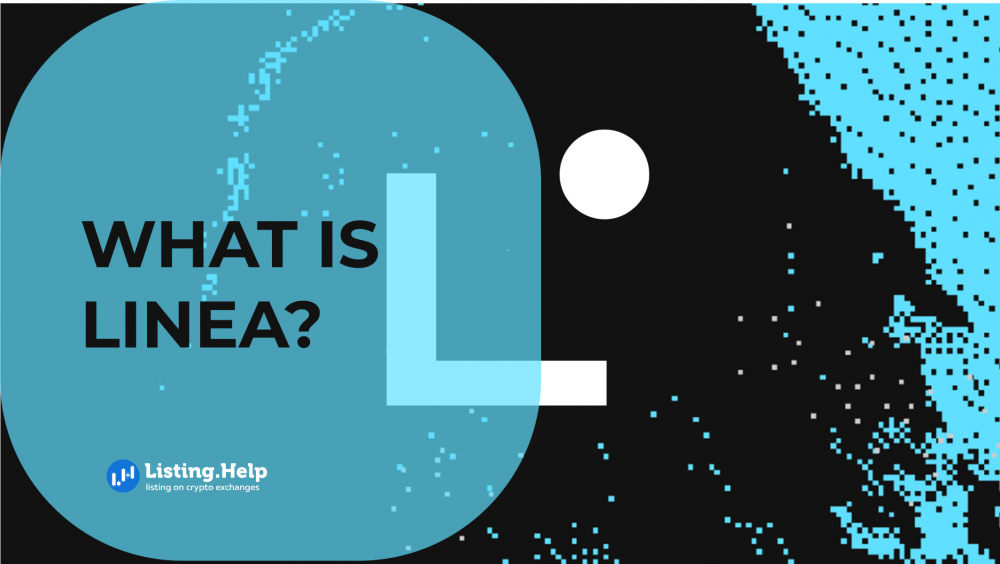
What is Linea Blockchain?
Ethereum faces a well-known scalability issue, which remains a significant challenge. While Ethereum has yet to resolve this, several projects within its ecosystem are exploring various approaches to tackle this problem. ConsenSys, a prominent web3 technology company, has introduced its own zkEVM, Linea.
What is a Zero-Knowledge (ZK) Rollup?
Zero-knowledge rollups (ZK-rollups) aim to improve Ethereum’s scalability by processing transactions off-chain. By minimizing the on-chain data each transaction requires, ZK-rollups allow blockchains to manage more transactions.
ZK-rollups strike a balance between scalability and security using zero-knowledge proofs (ZKPs). A ZKP can confirm the truth of a statement without revealing the specifics. These proofs enable anyone to validate the correctness of a statement.
For ZK-rollups, ZKPs verify the validity of a batch of transactions without disclosing transaction details.
A ZK-rollup prover will:
1. Collect a batch of transactions.
2. Calculate their impact on the ZK-rollup platform’s state.
3. Generate a ZKP showing that the transactions produced the resulting state update.
4. Submit the updated state and ZKP to the on-chain verifier contract.
The verifier then checks the ZKP, and if correct, updates the state accordingly.
As a result, only the ZKP and the updated state are stored on-chain, which is more efficient than storing all transactions. This method allows Ethereum to handle a higher volume of transactions.
What is Linea?
Linea is a Layer-2 solution designed to scale Ethereum efficiently. As an EVM-compatible zkEVM, it utilizes Zero Knowledge Proofs (zkProofs) and offline computation to handle large transaction volumes, easing the load on the Ethereum mainnet.
Linea enhances Ethereum by providing a quicker and more cost-effective transaction process, all while maintaining the robust security of the primary Ethereum network. It achieves this by implementing vertical scaling, which leverages rollup technology—either optimistic or zk rollups. These rollups execute and verify transactions off-chain before consolidating and recording the summary data on Ethereum’s Layer-1 blockchain.
How Does Linea Work?
Linea operates as a ZK-rollup on the Ethereum network, tailored to assist developers working with Ethereum. It maintains full compatibility with the Ethereum Virtual Machine (EVM) as a Layer-2 (L2) protocol.
The integration of a fully EVM-compatible ZK-rollup in Linea is crucial as it significantly expands the capabilities of developers to innovate within the Ethereum ecosystem. Limited compatibility in other ZK-rollups often restricts developer operations because not all functionalities are available.
Utilizing Consensys’ zkEVM, Linea allows developers to use the same programming practices for its L2 environment as they would for Ethereum’s main layer (L1). This compatibility facilitates the seamless transfer of existing smart contracts from L1 to the rollup, thereby enhancing scalability. Additionally, Linea supports the creation of new contracts directly intended for its L2, broadening the development possibilities within the Ethereum framework.
Benefits of Linea
Scalability
A key advantage of Linea, like other Ethereum rollups, is its ability to increase the scalability of the Ethereum blockchain. Linea processes transaction data off-chain and retains only the zero-knowledge proofs (ZKPs) and state data on-chain. This significantly lowers the on-chain storage demands per transaction, allowing for more transactions to be accommodated in each Ethereum block, thus boosting the blockchain’s scalability.
Furthermore, Linea employs a technique known as conflation, where it consolidates multiple rollup blocks into a single update on L1 if the conditions are conducive. This further helps in reducing the blockchain space occupied by transactions.
Cost Efficiency in Execution
Reducing the volume of on-chain data and execution also brings down the gas fees associated with transactions. Gas fees are incurred for operations performed within the L1 EVM. By shifting transactions to an L2 and only logging the state updates on L1, Linea not only cuts down on the data handled by L1 but also the transactions processed by it, leading to lower transaction costs.
Security
As a ZK-rollup, Linea uses zero-knowledge proofs (ZKPs) to authenticate state updates resulting from transactions processed off-chain. It stores these state updates and ZKPs on-chain, rather than the complete set of transactions, thus maintaining security without the need for storing extensive data on-chain.
This contrasts with Optimistic Rollups, which do not use ZKPs to confirm the accuracy of off-chain transactions. Instead, they wait for a challenge period to pass, during which errors can be reported and addressed. This makes them susceptible to certain attacks such as Denial of Service (DoS) threats.
A ZK-rollup like Linea offers greater security as it accompanies each batch with a proof of legitimacy in the form of a ZKP, unlike Optimistic Rollups which depend on the timely submission of challenges to counter invalid batches.
Immediate Finality
Another benefit of Linea, like other ZK-rollups, is the immediate finality of transactions. Once a transaction batch is committed to L1, it is considered final and can be immediately integrated into subsequent transactions.
In comparison, Optimistic Rollups require a waiting period to ensure that no challenges are raised against the rollup transactions before they are finalized.
Quantum Resistance
Linea incorporates lattice-based cryptography for its zero-knowledge proofs, which is reputed to be secure against quantum computing attacks. This form of cryptography is not only robust but also ensures that Linea will remain secure without needing future upgrades to quantum-resistant algorithms, even as quantum computing advances.

For more insights into the world of cryptocurrency and the latest industry trends, be sure to visit listing.help/blog.

